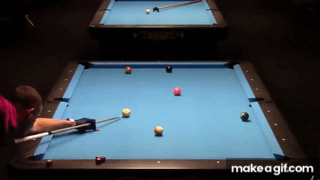I used to play mainly with a closed bridge. Now, at 68, I use mostly an open bridge. My fingers are not very long and I have found it to be more comfortable to use the open bridge. So I think it depends on your anatomy and may change with age as well.
One of the top local players was drunk one night and kept telling me "all the pros" use a particular closed bridge (I knew it was not true of course but kept my mouth shut). He was contorting my fingers in a way that I would never, ever be able to use repeatedly. Because of my anatomy it was so tight I could not slide the stick smoothly. So, to each your own. Choose what is comfortable and stable.
One of the top local players was drunk one night and kept telling me "all the pros" use a particular closed bridge (I knew it was not true of course but kept my mouth shut). He was contorting my fingers in a way that I would never, ever be able to use repeatedly. Because of my anatomy it was so tight I could not slide the stick smoothly. So, to each your own. Choose what is comfortable and stable.




